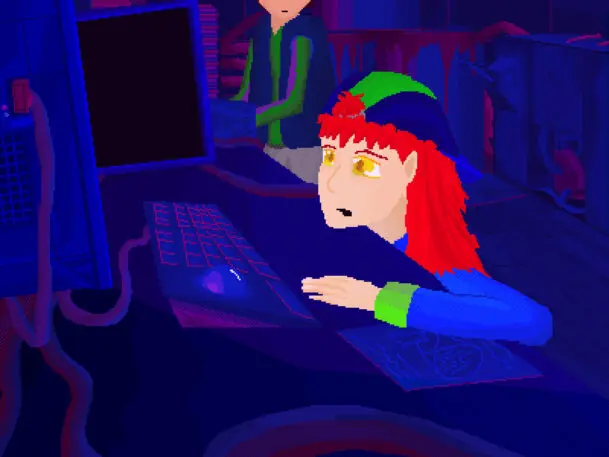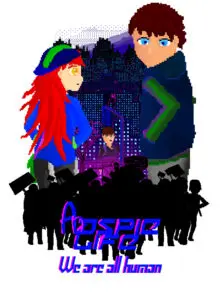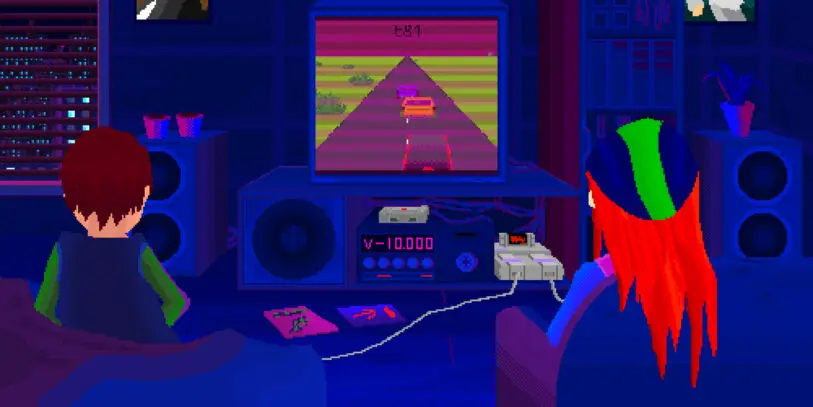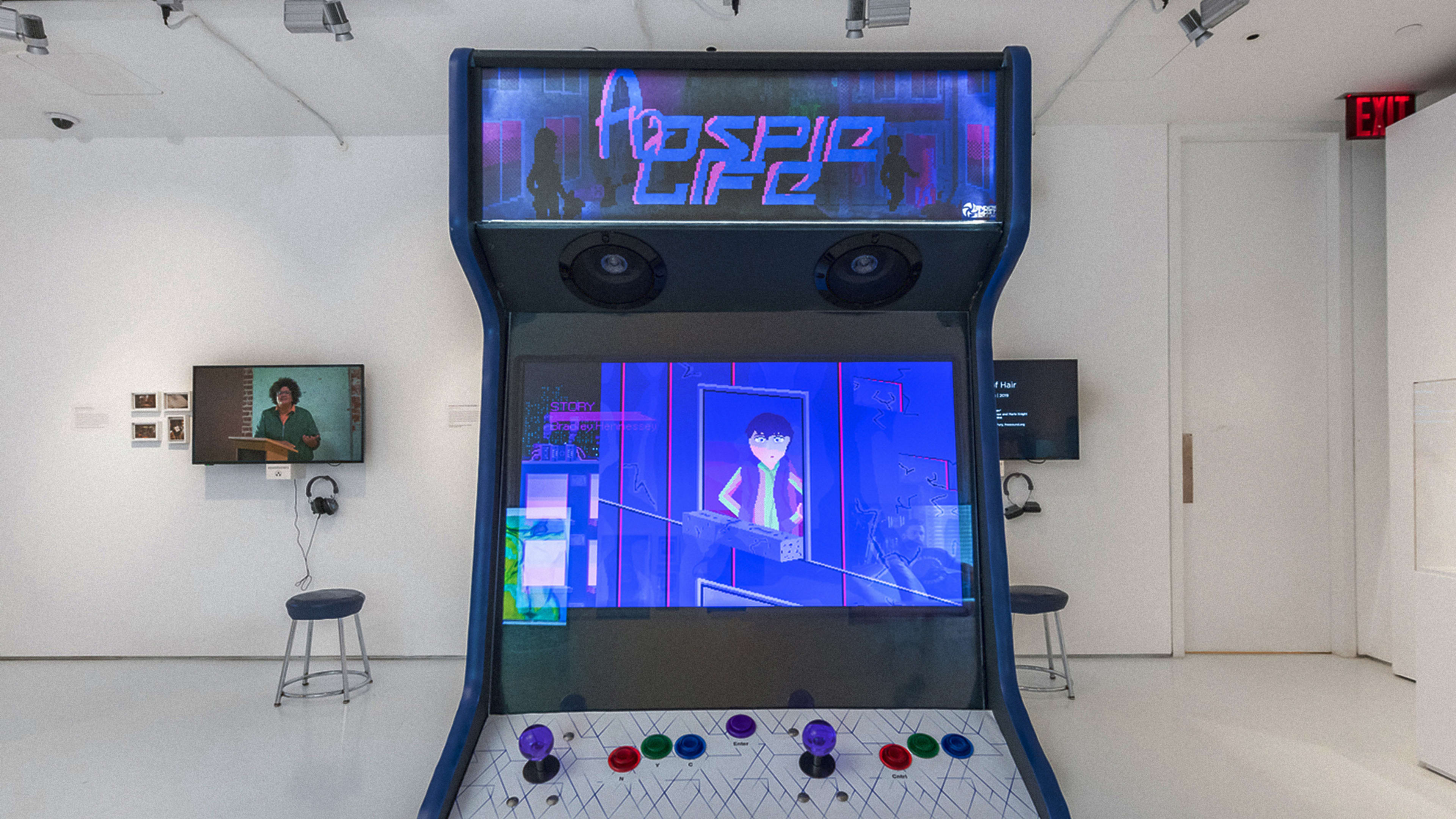I’m standing in front of an arcade machine. I grab the joystick and walk my character into a loud room and the screen starts to shake. I watch the boy on the screen press his hands to his ears as little pixels burst out of him and I try, frantically, to fiddle with the controls to turn the volume down. The experience lasts 10 seconds, but it’s enough to leave me flustered.
This is An Aspie Life, a video game that helps people experience the world through the lens of autism. Its creator, the Australian video game designer Bradley Hennessey who has Asperger’s Syndrome, first released the game in 2018. But an updated version is now on display at the Museum of the Moving Image in Queens, New York, as part of a broader exhibition featuring works from media makers on the spectrum.


Hennessey was only 16 when he created An Aspie Life. “I was frustrated about the lack of understanding of what it was like,” he says, drawing comparisons between physical disabilities that may involve crutches or a wheelchair, and neurological disorders that may not be immediately apparent. “That visual understanding and quick identifier is lacking,” he says. “And on top of that, because it’s a spectrum, that spectrum makes people confused.”
The character in the game—a moody-looking teenager who often walks with his hands in his pockets—was modeled after Hennessey. “I looked into myself and tried to see what things affected me,” he says, citing noise sensitivity as an example.
The look and feel of the game—a pixelated world of dark blues and eerie purples—helps set the scene, too. “The color palette was developed to reflect my isolation at the time,” he says. And every single character appears as a black outline, a nod to Hennessey’s struggles to interpret body language and facial expressions.

Now, Hennessey is finalizing the design of his prequel, which will be available to play at the museum (and on Steam soon). The prequel is set on an island, where characters discover more about themselves as they solve mysteries. “You have little battle situations where you have to fight monsters that are incarnations of your emotions,” he says. The island is a nod to the isolation caused by autism, but Hennessey says it was mostly informed by his childhood growing up in a tight-knit community on Australia’s Gold Coast.
The game is centered around three characters, and players can swap between them to step into their shoes and see how they experience the world as the parameters change accordingly. For example, the sight-impaired character has tunnel vision, so the screen becomes darker on the edges. “It’s a visual metaphor,” says Hennessey, who drew from his partner’s sight impairment.
Looking back, Hennessey says that designing An Aspie Life gave him a deeper understanding of who he was, but with the prequel, he was curious to dive even deeper by drawing from his younger years. I ask if he has plans to make a sequel. “I want to make a trilogy,” he says, “but maybe in 20 years time, once I’ve gone through the stages in adulthood.”
Recognize your brand’s excellence by applying to this year’s Brands That Matter Awards before the early-rate deadline, May 3.
